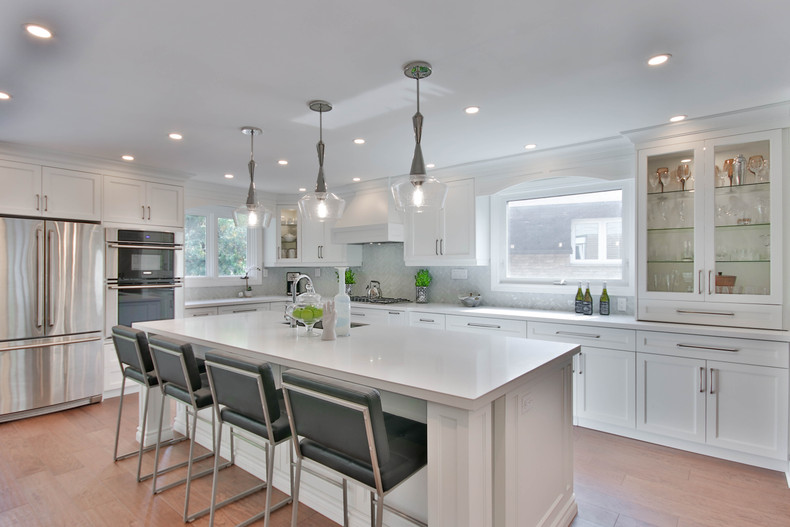Long Lasting and Fashionable Choices for High-Quality Legs For Kitchen Island
Long Lasting and Fashionable Choices for High-Quality Legs For Kitchen Island
Blog Article
Crucial Factors to Take Into Consideration When Picking Legs For Kitchen Area Island
Choosing the ideal legs for a kitchen island includes a careful evaluation of numerous factors that can substantially affect both functionality and visual allure. As we explore these components, it becomes clear that each decision can have far-ranging implications for the general kitchen area experience.
Product Options
When selecting legs for a kitchen area island, recognizing the numerous material options is vital for attaining both aesthetic appeal and structural stability (Legs For Kitchen Island). The selection of product significantly influences not only the toughness of the island yet additionally its overall design and functionality
Steel legs, often made from stainless steel or wrought iron, add a commercial and modern feel while guaranteeing durability and security. These products are immune to wear and can sustain considerable weight, making them suitable for larger islands.
Another option is crafted materials, like MDF or plywood, which can be much more cost-effective while still offering a series of surfaces. However, they may not give the exact same level of security as strong wood or steel. Materials such as acrylic or glass can develop a contemporary appearance, though they may call for extra support to make sure stability.
Inevitably, the selection of product for kitchen island legs need to line up with the wanted performance and the overall style of the kitchen.
Design And Style

When considering design, the form and coating of the legs are essential. Conical legs can supply a sense of lightness and elegance, while thicker, more durable legs can share toughness and security. Furthermore, the finish-- be it painted, tarnished, or all-natural-- must match the cabinetry and countertop products to produce a unified appearance.
Furthermore, the layout of the legs can additionally show individual taste. Customized or attractive legs, such as those featuring intricate makings or unique geometric forms, can function as focal factors, including character and personality to the cooking area. Eventually, the best selection will certainly not only boost performance but additionally raise the aesthetic charm, making the kitchen island a standout attribute of the home.
Height Factors To Consider
Choosing the proper elevation for kitchen island legs is vital, as it straight impacts both performance and convenience. The standard height for a kitchen area island typically ranges from 36 to 42 inches, lining up with usual kitchen counter heights.

It is also necessary to represent try this out users' choices and heights. Personalizing the height can make certain a comfy experience for all member of the family, making the kitchen area island an extra delightful and practical area.
Weight Assistance
Making sure appropriate weight support for cooking area island legs is vital for both safety and security and functionality. The kitchen area island commonly offers numerous purposes, including cooking, eating, and additional storage space, requiring a robust assistance structure. When choosing legs, it is critical to take into consideration the general weight ability required based on the island's meant usage and the materials that will be put on it.
The choice of material for the legs plays a considerable duty in their weight-bearing capabilities. Solid timber, steel, and sturdy composites typically supply premium strength compared to lighter materials. Furthermore, the layout of the legs-- whether they are right, tapered, or have a pedestal form-- can influence their capability to distribute weight successfully throughout the framework.
Moreover, the leg placement ought to be tactically prepared to improve security. Legs placed at the edges or with a bigger base can much better sustain larger lots. Constantly consult the manufacturer's specifications concerning tons limitations to guarantee that the legs can sustain the designated weight without jeopardizing safety. In summary, selecting kitchen island legs with adequate weight support is essential for creating a safe and useful cooking area.
Installation and Upkeep
Appropriate installment and maintenance of cooking area island legs are crucial for making sure long life and security. This commonly includes protecting the legs to the island base making use of proper fasteners, making certain that the legs are level and aligned.
When installed, routine maintenance is essential to preserve the integrity check my blog and appearance of the legs - Legs For Kitchen Island. For wooden legs, regular cleansing with a damp fabric and application of ideal timber polish can stop dampness damage and maintain their surface. Steel legs might require a gentle cleaning option to get rid of grease and grime, complied with by a completely dry towel to stop rust formation
Furthermore, check the legs regularly for signs of wear or damages, such as splits or loosened joints. Tightening up screws or screws as required can likewise extend the life expectancy of the legs. By adhering to these setup and maintenance practices, house owners can make certain that their cooking area island stays strong and visually appealing for many years to come.
Conclusion

Visual comprehensibility is paramount in selecting the style and design of legs for a kitchen area island, as these aspects considerably affect the total setting of the room. Conical legs can give a feeling of lightness and beauty, while thicker, extra durable legs can share toughness and security.Picking the ideal elevation for kitchen area island legs is vital, as it straight affects both performance and comfort. In summary, picking kitchen area island legs with sufficient weight support is important for creating a safe and functional culinary space.
In conclusion, picking legs for a cooking area island requires cautious consideration of various variables, consisting of material options, design, elevation, weight support, and installation.
Report this page